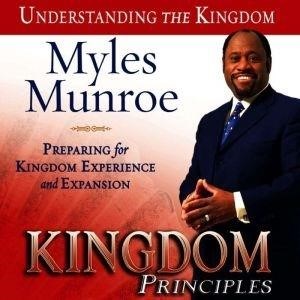James Stewart Calculus 9th Edition PDF⁚ A Comprehensive Guide
This guide explores the availability, features, and potential risks associated with accessing James Stewart’s Calculus, 9th Edition, in PDF format. We’ll examine legitimate sources, copyright implications, and the key improvements in this widely-used textbook.
Availability and Access
Securing access to the James Stewart Calculus 9th Edition PDF requires careful consideration of various avenues. The official publisher, Cengage Learning, offers the textbook in print and digital formats, potentially through their website or authorized online retailers. However, many students seek free PDF versions online. This route presents both advantages and significant drawbacks. While readily available from various sources, including file-sharing sites and online libraries, downloading from unverified sites carries substantial risks. These range from potential malware infection to copyright infringement. Therefore, careful evaluation of the source is crucial before downloading any PDF version. Legitimate access routes typically involve purchasing the digital version directly or utilizing university library resources, offering a safe and reliable approach.
Different Editions and Versions
The James Stewart Calculus textbook exists in several editions and formats, each with subtle differences. Beyond the core 9th edition, there’s a “Metric Edition” tailored for international markets, incorporating metric units throughout its examples and exercises. Additionally, variations exist based on whether the book covers single-variable calculus or extends to multivariable calculus. Some versions might include supplementary materials like solutions manuals or online access codes. These ancillary resources often vary depending on the retailer or purchasing method. Students should carefully check the specific edition and contents before purchasing or downloading, as variations may affect problem sets, examples, and the overall learning experience. Understanding these nuances ensures you acquire the most appropriate version for your specific needs and course requirements.
Author and Contributors
James Stewart, a renowned mathematician, is the primary author of the widely acclaimed Calculus textbook series. His clear and accessible writing style has made his books a global standard for calculus education. However, the 9th edition also acknowledges the contributions of Daniel K. Clegg and Saleem Watson. While Stewart laid the groundwork and established the pedagogical approach that defines the series, Clegg and Watson played vital roles in updating and refining the text for the 9th edition. Their involvement likely included revisions, additions of new examples, and ensuring the accuracy and consistency of the content across chapters. The collaborative effort of these authors reflects a commitment to maintaining the high standards and clarity that characterize the Stewart Calculus legacy, making it a reliable resource for students worldwide.
Finding the PDF Online
Locating a legitimate PDF version of James Stewart’s Calculus, 9th Edition, requires careful consideration of legal and security implications. Proceed with caution when searching online.
Legitimate Sources and Alternatives
Securing a legal copy of James Stewart’s Calculus, 9th Edition, PDF is crucial. While finding a free, authorized PDF online is unlikely, several legitimate avenues exist. Your college bookstore or university library likely provides access; check their online resources or physical collections. Consider purchasing a used physical textbook – often a more affordable option. Cengage Learning, the publisher, might offer digital access options for purchase. Explore their website for possible e-textbook downloads or rental services. Reputable online retailers like Amazon or Chegg sometimes sell digital versions, ensuring you obtain a legitimate copy while supporting the authors and publishers. If your institution uses a learning management system (LMS) like Canvas or Blackboard, they might offer the textbook through that platform.
Potential Risks of Downloading from Unverified Sites
Downloading James Stewart’s Calculus, 9th Edition, PDF from unverified websites carries significant risks. These sites often host pirated copies, violating copyright laws. Downloading pirated material could expose your device to malware, viruses, or spyware. Such malicious software can compromise your personal information, including passwords and financial details. Furthermore, the quality of pirated PDFs can be substandard, with missing pages, illegible text, or inaccurate formulas. This can severely hinder your learning and understanding of the material. Finally, supporting piracy undermines the authors and publishers, discouraging the creation of future educational resources. Always prioritize legitimate sources to avoid these potential pitfalls and ensure a safe and effective learning experience.
Copyright Considerations
Downloading and using copyrighted material, such as James Stewart’s Calculus 9th Edition PDF, without proper authorization is a violation of copyright law. This can lead to legal repercussions, including fines or lawsuits from the copyright holder, Cengage Learning. Respecting intellectual property rights is crucial; authors and publishers invest significant time and resources in creating educational materials. Purchasing a legitimate copy supports their work and ensures access to accurate, complete content. Free, unauthorized PDFs often lack essential components, such as solutions manuals or supplementary resources, which are integral to the learning process. Remember that academic integrity also necessitates using legally obtained materials. Choosing legitimate sources ensures compliance with copyright and supports the educational ecosystem.
Features of the 9th Edition
The 9th edition boasts refined explanations, updated examples, and enhanced problem sets, building upon Stewart’s renowned clarity and precision.
Key Improvements and Updates
The ninth edition of James Stewart’s Calculus refines the already highly regarded text with several key improvements. The authors, continuing Stewart’s legacy, have meticulously reviewed and updated the content to enhance clarity and accuracy. Many examples have been revised to better illustrate core concepts, using real-world applications where possible to increase student engagement and understanding. The problem sets have also undergone significant changes, with the addition of new problems designed to challenge students at various skill levels. These improvements are not simply cosmetic; they are intended to enhance the learning experience, making the material more accessible and effective for a broader range of students. Furthermore, the integration of technology throughout the text is more seamless, reflecting current pedagogical best practices. This updated version aims to solidify its position as a leading calculus textbook.
Content Overview and Structure
James Stewart’s Calculus, 9th Edition, maintains a comprehensive and logical structure, covering a broad range of calculus topics. The text typically begins with foundational concepts in limits and derivatives, progressing through differentiation techniques, applications of derivatives, and integration. Multivariable calculus is often included in later chapters, building upon the single-variable foundation; Each chapter is meticulously organized, breaking down complex concepts into smaller, manageable sections. Within each section, clear explanations are provided, accompanied by numerous worked examples that demonstrate the application of key theorems and techniques. The consistent use of clear and concise language, combined with the logical progression of topics, ensures that students can grasp the fundamental principles of calculus effectively. The organization fosters a deep understanding, not just rote memorization, of the subject matter.
Problem Sets and Solutions
A defining feature of Stewart’s Calculus is its extensive and varied problem sets. Each section concludes with a comprehensive collection of exercises, ranging from routine practice problems to more challenging, conceptual questions designed to deepen understanding. These problems are carefully graded in difficulty, allowing students to build confidence and progressively tackle more complex challenges. The inclusion of both straightforward and intricate problems ensures that students develop a strong grasp of both the mechanical and theoretical aspects of calculus. Many editions provide solutions to select problems, either within the textbook itself or in a separate solutions manual. This allows students to check their work, identify areas where they need further clarification, and develop effective problem-solving strategies. The availability of solutions, however, should be used judiciously to encourage independent thinking and problem-solving skills before resorting to the answers.

